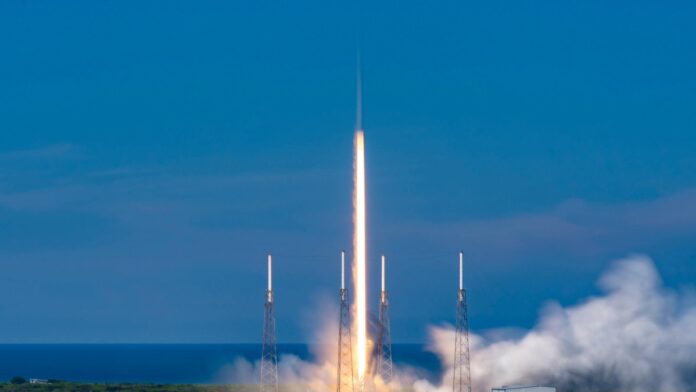Flat High Performance Starlink brings satellite broadband to your camper
SpaceX has announced Starlink for RVs (Recreational Vehicles). The latest permutation of broadband internet service provided by Starlink’s constellation of satellites in Low Earth Orbit (LEO) costs $135 per month, plus $599 in hardware fees — a slight monthly premium, but the same hardware fee as the standard service. Starlink for RVs is currently available for order and use in select markets.
The news comes only a couple of weeks after Starlink announced a similar, much higher-priced service for private planes and a couple of months after the company announced maritime service as well. The efforts to expand Starlink’s service to customers in the air, on sea and while moving on land reflect changing regulations for SpaceX; Starlink was cleared to begin offering service to vehicles in motion over the summer by the U.S. Federal Communications Commission (FCC). Prior to the FCC announcement, Starlink was limited to providing service through stationary ground equipment only.
Flat High Performance Starlink is designed for permanent installation on top of a vehicle, and can work while the vehicle is in motion. SpaceX envisions Starlink for RVs as ideal for its customers who may be traveling to remote locations where connectivity is unreliable or unavailable altogether. The new “Flat High Performance Starlink” comprises a different antenna, designed to be permanently installed on a vehicle. The flat antenna sports a wider field of view and better GPS capabilities than its standard Starlink ground system counterpart, and is resilient to harsh operating conditions, the company said.
The hardware cost for Flat High Performance Starlink is the same as the standard Starlink kit. The RV-oriented service carries a slight monthly premium — $135 vs $110. The company emphasizes that the new service for RVs can be billed in one-month increments, and paused when it’s not used. Starlink says this helps users customize service based on their individual travel needs.
The RV, marine and aviation efforts demonstrate Starlink’s efforts to expand its business beyond stationary broadband service. The company launched its first satellites in 2019 and opened up pre-orders to the public in early 2021. As of September, Starlink had about 700,000 subscribers, according to SpaceX’s VP of commercial sales Jonathan Hofeller, speaking to attendees of World Satellite Business Week in Paris. He said the company had seen a sharp uptick in subscribers globally after adjusting pricing in different markets.
Starlink has had some growing pains on the way, according to Ookla. Ookla said in September that it had shown signs of slowing down since its initial launch, recording a drop in median download speed between 9-54% from the second quarter of 2021 to the second quarter of 2022.
As the company continues to try to expand its customer base with new services, Starlink scored another high-profile win in late August with T-Mobile US. The companies announced plans to provide T-Mobile US customers with coast-to-coast text messaging coverage beginning in late 2023.
Starlink isn’t the first company to promise space-based texting capabilities, of course. And its news was quickly overshadowed by Apple’s introduction two weeks later of the iPhone 14, which went on sale in September. The iPhone 14 sports emergency text message capabilities linked to Globalstar’s satellite network. Apple plans to activate the service in November and said it will provide it free to customers, for the first two years.
Starlink’s plans with T-Mobile reflect its ambitions to grow, even if there’s a moon shot element to the plan. For T-Mobile and Starlink to get the service working, Starlink needs to get newer, bigger satellites into orbit. Those satellites aren’t ready to launch yet. In fact, the rocket to get them there isn’t ready for flight yet. SpaceX will need Starship to launch the new generation of Starlink satellites into orbit. Starship is a new fully reusable heavy-lift launch vehicle. But it’s still grounded, pending government clearances and final tests. SpaceX hopes to get a full-scale orbital test flight with Starship done before the end of the year.
Regarding the next-gen satellite design to enable the T-Mobile service, SpaceX Chief Scientist (and Tesla boss, and now Twitter owner) Elon Musk expressed confidence that his company can get it done.
“We have it working in the lab, and we’re confident this will work in the field,” he said.

